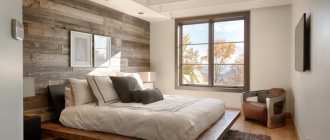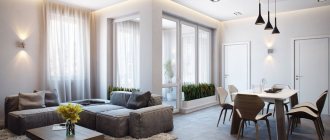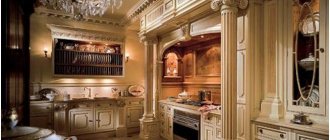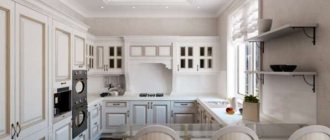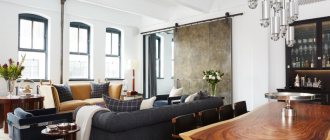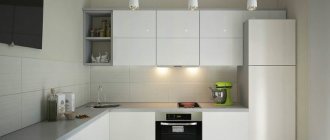History of the style
The emergence of fusion dates back to 1970 – 1990. It manifested itself not only in the interior, but also in other areas:
- In music (in 1970, various directions of jazz music emerged with the interweaving of ethnic motifs);
- In dance (dance aesthetics became more open and flexible, fusion dances could combine movements of folk, oriental and modern choreography);
- In cinematography;
- In cooking (unusual seasonings and spices are added to traditional dishes, they are served in a new artistic manner);
The style rapidly penetrated into various spheres of human activity, gaining more and more fans. Everything traditional was served with a different sauce, presented from a new point of view, uniting continents and nationalities. If fusion music arose in the 70s, then the style made its way into the interior at the end of the 20th century. Materials and decor from exotic countries have penetrated traditional interiors, giving them a spirit of freedom and liberated openness to everything new.
American designers were the first to master the fusion style in the interior. They created bold interiors, combining classics with ethnic motifs or baroque with hi-tech. At the same time, they filled the space with decor with Latin American, Chinese or African motifs. Thus, an upholstered chair with patterned fabric upholstery began to sit side by side with an unusual table with a mirrored tabletop and a rug in the shape of a leopard skin, a zebra, or simply with a geometric pattern.
In the 90s of the twentieth century, the concept of “fusion style in the interior” began to be heard more and more often. What it is? Translated from English, fusion means merger, alloy, synthesis. This definition began to be used for interiors that combine the incongruous. That is, in the interiors of houses, cafes, and hotels, designers increasingly mixed features of different styles, complementing them with decor and furniture from different nationalities.
For example, a classic bedroom interior with a comfortable bed, white walls and ceiling, and classic curtains was complemented with pop art color spots, a futuristic chandelier and an Egyptian bust. Furniture items that were completely incompatible at first glance acquired new meaning in their successful proximity to each other. They became an integral part of a single space.
Categories and types
Fusion food is a general term for a combination of different types of cuisines and comes in several varieties. Regional fusion combines various cuisines of a region or subregion. Asian fusion restaurants, combining cuisines from different Asian countries, have gained popularity in many regions of the United States and Great Britain. Their menus often feature Oriental, Southeast and South Asian dishes side by side, as well as dishes based on a combination of the respective cuisines[2]. Californian cuisine is considered a fusion culture, drawing inspiration from Italian, French, East Asian and Mexican cuisines and European delis, creating traditional dishes with non-traditional ingredients such as California pizza. Other examples of this style are Tex-Mex, which combines Mexican and Southwestern American cuisines, and Hawaiian cuisine, which combines the cuisines of many island nations.[3] In the UK, an example of early fusion cuisine can be considered fish and chips .
), since it combines components from Jewish, French and Belgian cuisines[4][5].
In Australia, due to the active flow of migrants, fusion cuisine is being rediscovered, and it is rapidly becoming the norm in many cafes and restaurants. Another incarnation of fusion takes a more eclectic approach, in which original dishes are prepared using ingredients from different cuisines and regions. Such restaurants can offer a wide range of dishes inspired by combining different regional cuisines with new ideas[6]. Malaysian cuisine is another popular example of fusion, combining Malay, Javanese, Malaysian, Chinese and Indian cuisines, with some influences from Thai, Portuguese, Dutch and British cuisines.[7]
Food that is based on one culture but prepared using ingredients and flavors from another culture is also considered a form of fusion. For example, pizza topped with cheddar, spicy cheese, salsa, refried beans, or other common taco ingredients is often sold under the name "Taco Pizza".[8] This dish combines Italian and Mexican cuisine. A similar approach was used in the case of fusion sushi: preparing maki with different types of rice and ingredients, for example, curry and basmati rice, cheese and salsa with Spanish rice, spicy ground lamb with capers wrapped in Greek rice and grape leaves and resembling a dolma inside out. Some fusion cuisines have come to be seen as distinct national cuisines, as is the case with Peruvian Nikkei cuisine, which combines Japanese spices and seasonings with Peruvian ingredients such as Peruvian ahi chili peppers and seafood. The quintessence of this cuisine is the dish "Maki Acevichado", or ceviche roll, which consists of Peruvian marinated fish wrapped in rice, avocado or seaweed.
Characteristic patterns for fusion style
Interior design in fusion style is characterized by an abundance of different patterns. They calmly get along next to each other, creating a unique creative space. To emphasize the individuality of the interior, its character and freedom, the following patterns and designs are used:
- zigzags and winding lines;
- geometric motifs (diamonds, squares, circles);
- stripes and checks;
- floral and plant patterns;
- ethnic drawings;
- animal prints.
Apartment interior in fusion style. Laws of Design
Law 1.
The fusion style (from the English fusion - “merging”, “unification”, “synthesis”, “mixing”) is a positive example of the globalization of culture; it contains motives and elements of ethnic principles of design of living space along with classical and universal ones.
Law 2.
Fusion is unpredictable. The shapes, color and content of the designed interior - all the “filling” should be combined into an organic space. Once all design stereotypes are discarded, freedom of light and color is proclaimed. There are no clear canons or rules.
Law 3.
In a fusion style interior, there are no clear horizontal and vertical lines or a rigid division into functional zones. Fusion requires the designer to comprehend the essence of things, search for new features, exclusivity, and unusual solutions.
Law 4.
A fusion-style interior naturally transforms luxury into effortless bohemianism.
Law 5.
A combination of materials and textures: plastic and stone, wood and metal, smooth and rough, soft and hard. Fusion loves layering.
Finishing walls, ceilings and floors
Natural materials are mainly used for surface finishing:
- wooden board and wooden panels;
- marble, sandstone, granite, slate, limestone;
- ceramic tiles;
- glass, glass panels.
Along with these materials, modern technologies are actively used, such as self-leveling flooring with a 3-D effect, three-dimensional plaster with a pattern, gilding, hollowing, and draped panels. The proximity of these materials gives an unusual effect.
Ceiling
Fusion style involves the bold use of absolutely any materials and colors to decorate the ceiling. However, very often designers choose a plain white ceiling. The smooth plastered surface is painted with water-based paint. A simple white ceiling is a good backdrop for an unusual modern chandelier.
Along with simple design solutions, intricate ideas are also used. For example, the ceiling is combined with the roof, lined with glass panels. They not only protect the room from precipitation, let in the maximum amount of light, but also give a striking decorative effect.
A few more ideas for a fusion style ceiling:
- Stretch glossy white or colored ceiling (it reflects the interior, creating a Looking Glass effect);
- The ceiling is made of wooden panels of various sizes;
- White ceiling with wooden beams.
Floor
Most often, when choosing a floor covering, the practical side of the issue is taken into account. Wooden, laminated, parquet floors are selected for the living room and bedroom. In the bathroom and kitchen, the floors are finished with tiles or linoleum. The terrace can be laid with natural stone. In this case, the floor can be completely monochromatic.
Then it is complemented with a bright runner, carpet or skin. Or it can be artistically decorated (self-leveling flooring with a pattern, artistic parquet or mosaic). In this case, it is not covered with anything, allowing guests to admire the interior miracle.
Walls
To decorate the walls, several different techniques and materials are chosen at once. It’s good if you can harmoniously combine a smooth painted surface with brickwork, wooden panels with mosaic inserts, bamboo wallpaper with white smooth plaster. Walls are a space for creativity and self-expression.
They are supplemented with fabric draperies, paintings by famous artists, objects of mass art (posters, posters or comics), mirrors, and framed photographs. At the same time, it is important not to forget about the red thread of national color, which should run through the interior, enriching it.
Fusion style color scheme
Unlike most trends, the interior of a fusion kitchen does not follow strict rules. It uses a variety of shades, the main thing is that they are not boring: yellow, red, orange, pink, turquoise, green, blue and so on.
Calm pastel colors are inappropriate here. Designers recommend using bright colors in accessories. However, you also need to be careful here, since the abundance of colors will only spoil the kitchen design. Take as a basis 3-4 colors that harmoniously combine with each other, and come up with an interior based on them.
Lighting organization
When designing an interior design in a fusion style, the designer especially highlights the theme of lighting. With its help, an ordinary room can be turned into a cinema pavilion or a disco hall. Light is used not for general illumination of the environment, but to highlight specific elements, to create a light show within an ordinary residential apartment. To illuminate a large living room, of course, you can choose a central chandelier. Most often they give preference to modern models with an interesting design. But at the same time, they are thinking about spot lighting of individual decorative elements.
Tip: Place some directional lights directly in the floor area. Directional light coming from below will create the effect of spotlights.
The following lighting devices are used:
- Table lamps;
- Bi-directional sconces;
- Rotating lamps;
- Spot lighting;
- Pendant lamps;
- Floor lamps;
- Hidden halogen lighting;
- Directional lamps.
An important fact is that you do not need to specifically select all lighting fixtures from one collection, paying attention to their shape and material of manufacture. Fusion allows for a variety of shapes, colors and textures.
Characteristic features and colors of style
Fusion is a design, decorative style, so the main thing it relies on is:
- "taste";
- harmony;
- appearance of simplicity;
- knowing of limits.
If you doubt that you have a developed taste for aesthetics, do not try to create a fusion style interior yourself, entrust the job to a professional. Despite the fact that the shapes and objects in the fusion room are very different (this is characteristic of the style), everything together must look holistic and “harmonious”. And also somewhat carelessly, even carelessly: luxurious side by side with emphatically simple, intricate forms with clear ones, some unusual attributes with others.
Fusion is a well-planned, cheerful mess that feels cozy and carefree.
In addition to the listed qualities, fusion style rooms are characterized by:
- flashes of color;
- "animal" prints;
- rich textiles;
- vintage and antique items.
▫ The “native” colors for the style are pink, yellow, turquoise, orange, and purple. They must be combined carefully so that they do not “quarrel” with each other or cause a feeling of discomfort.
▫Animalistic pattern is a favorite of style. Zebra and tiger stripes, silhouettes of antelopes and rhinoceroses, as well as floral patterns a la jungle - all this can be seen in homes where fusion reigns. ▫ Fabrics play an important role in this interior - lush carpets, pillows with colorful prints, pretentious-looking velvet curtains... The choice is essentially unlimited.
▫ In homes where they love fusion, new items from the furniture industry are found side by side with antique or heirloom items. Objects with history (black and white photos, chests of drawers, dishes) make any decoration more soulful and fill the house with special energy.
Use of textiles
Textile design is also subject to the use of the main rule - no rules. That is, when decorating a bedroom or living room, you can safely combine translucent and heavy textured fabrics and place several types of different pillows nearby. Fusion recognizes multi-layering, layering of different patterns, colorful fabrics, drapery. It is not necessary to stick to one patterned line when decorating a room. Fusion allows for the juxtaposition of geometric and floral themes in combination with national symbols.
Kitchen interior in fusion style
The contradictory design of the apartment allows for the presence of elements that have not been thought through to their logical conclusion. A fusion style kitchen can look very original and cozy due to the details used, which should be beautiful and functional.
To create a unified space in the kitchen decoration, details taken from other styles are used. From the loft style they take bare brick walls, whitewashed or painted over so that the masonry is clearly visible.
Wooden ceilings are taken from the chalet style, and from high-tech - furniture and shiny chrome dishes, which are hung on an open wall in a Mediterranean style.
Bright porcelain displayed on open shelves is used as decor. Fusion cuisine allows the use of utensils from all possible materials. It can be food grade plastic, glass, ceramics, porcelain, metal.
Important! There should be a lot of light in the kitchen, and to achieve this goal, multi-level lighting is used in the kitchen, with the help of which additional zoning is carried out.
Lamps in different areas may differ in shape and style. For fusion, open shelves lined with pots of green vegetables are suitable.
In a well-lit kitchen space, herbs will grow well as a potted crop.
In order for everything to be harmonious, you need to remember the rule of 3 colors. To create the ideal interior, you can use a standardized system for identifying and selecting shades of the same color, which allows you to correctly combine them without overloading the space.
The fusion color palette can combine turquoise, gold and fuchsia. This is the most common color combination used in kitchens of this style. Rich tones in the interior should be balanced with calmer, natural shades. The design of the room will look advantageous if white and black colors are used with the addition of red shades
White color must be present in any combination of colors. It will help balance the riot of colors in the kitchen and create a comfortable environment. Otherwise, the most frantic disputes and scandals will flare up in the kitchen.
A harmonious appearance of the interior will develop if you can avoid cluttering the space. All disparate things must be connected in some way and emphasize each other. A complete, harmonious picture is formed only thanks to common sense and good taste, which allow you to avoid chaos in the design of the room.
Selection of furniture
A fusion style living room does not require a furniture set or set. To create the atmosphere, items from different collections and eras are suitable. A glass table in the Art Nouveau style will fit perfectly next to a classic sofa, and two completely different armchairs or an unusual sofa can be placed near the fireplace.
For the kitchen, you can use this idea - place 4 - 6 completely different chairs at the dining table. Even though pieces of furniture may differ in color, texture and style, they should still have one common detail. For example, chrome legs or leather inserts, or a patterned print.
Tip: do not clutter the space with unnecessary furniture. Fusion promotes freedom, so the room should have as much free space as possible.
Contrasts in everything
Old classic furniture elements are mixed with modern solutions. Placed accents in fusion style do not interfere with the harmonious perception of space. The use of opposing ideas, materials, and textures can be seen in the design of everything: from the ceiling and floor (a luxurious chandelier on a white ceiling or a high-pile carpet on a glossy floor) to details (carved and gilded frames on a brick wall).
Accessories and decor
When choosing decorative decorations for the interior of an apartment in the fusion style, it is important to express your own self through the prism of a variety of objects. They should reflect the taste of the owner of the home, his passions, preferences and favorite objects. The walls can be decorated with copies of your favorite paintings, photographs of actors, or your own photographs. Various mirrors are not hung alone, but arranged in groups. Although it is acceptable to have a large mirror in a three-dimensional frame next to a floor vase, a floor lamp and a bust in an ethnic style.
Fusion style idea
How do designers, combining different objects and elements of historical styles, achieve the desired harmony? — The secret is in the idea. A fusion style interior should be subordinate to a certain unified concept. It is determined even before choosing finishing materials, furniture, and decorative details. These could be themes such as, for example, “Life is Jazz”, “Tropical Islands”, “Spectacular Retro”, “Family Nest”... And much more - what is close to the owners of the house, what evokes warm emotions, pleases the eye .
It is under the main idea that the selection of household items begins.
Basic rules to follow
Behind the imaginary permissiveness of the style lies a small risk of turning a creative, unpretentious atmosphere with a touch of bohemianism into tasteless chaos. This can be avoided by relying on your own sense of proportion and taste, as well as using a few rules:
Rule - #1.
It is important to remember that fusion requires a free, well-lit space. Too much furniture, decor, textiles will overload the decor and ruin the charm of mixing styles.
Rule - #2.
Bold ideas are well suited for implementation in a fusion space. A little shocking will not hurt at all for such an interior.
Rule - #3.
When mixing eras, materials and styles, do not forget about the sense of proportion and the line between high art and banal ignorance.
Basic principles for implementing fusion style in the interior
In the modern understanding, fusion style interior design is a kind of protest against clear rules, frameworks and norms. The stylistic concept itself implies the creation of an individual, bright and extraordinary environment, an original living space in which a specific person or family will be comfortable and pleasant to live. Usually this style is chosen by artists, creative individuals, rebels by nature and in life. But even revolutionary fusion style solutions are subject to certain rules. Among them:
- a harmonious combination of different stylistic directions (no more than three), connected by a common idea, color, texture, materials;
- the use of contrasting colors (raspberry and gold, turquoise and blue, orange and green) in decoration and furniture, decor and accessories, but also no more than three, if there is a common unifying element (for example, the tone of natural wood, black or white background);
- the use of various materials in one room (glass, plastic, wood, metal, plastic, glossy and matte surfaces, velvet and silk);
- the opportunity to implement the most unusual design ideas and create a unique, inimitable interior;
- practicality and simplicity with visual expression (a small amount of decor and accessories that match the decor).
Without following the above principles, instead of a beautiful, spectacular apartment and kitchen, you risk getting a cacophony of colors, objects and textures.
Installation of furniture and household appliances
Of course, today you can find the most daring design solutions in furniture fittings. But for a fusion-style kitchen, for example: plastic chairs combined with a wooden table with cast iron legs.
Of course in bright colors. As for technology, it can be made in a modern design and also in a vintage one, it all depends on the colors around.
And most importantly, do not forget that this style does not like overload, only the necessary furniture and appliances, this also applies to decorative decorations.
Colors
Bright, bold colors are what fusion style is all about. For example, a shade of crimson and gold, in addition to pampas and metallic elements. It will look very original and impressive in a fusion style kitchen.
Don't be afraid to experiment, the main thing is to maintain balance. The result should be a picture as one whole, where everything is harmoniously combined. But you shouldn’t overdo it with bright shades, they can soon get boring and irritate.
Also, ideally, oddly enough, black color on a white background is very suitable, a few bright spots here you have a fusion style in the interior of the kitchen. Don’t forget about patterns and designs, they will soften bright colors.


